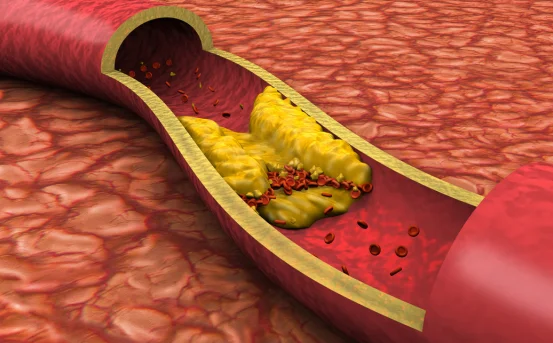Endovascular surgery has revolutionized the way we treat complex vascular diseases. This minimally invasive surgical approach involves treating conditions of the blood vessels—arteries and veins—from within, rather than through open surgery. It’s precise, less traumatic, and often involves faster recovery.
What is Endovascular Surgery?
Endovascular surgery is a minimally invasive procedure used to treat problems of the blood vessels, such as narrowed arteries, aneurysms, or blood clots. It is performed using catheters, wires, and stents inserted through small incisions, typically in the groin or arm.
Guided by imaging (like fluoroscopy or angiography), surgeons can repair vessels from the inside without the need for large incisions or major disruption to surrounding tissues.
When is Endovascular Surgery Needed?
Endovascular surgery is usually considered when:
This section addresses when is endovascular surgery needed and highlights key considerations.
- Blood vessels are blocked, narrowed, bulging, or damaged
- Symptoms are affecting daily life or causing serious complications
- Other non-surgical treatments (like medication or lifestyle changes) haven’t worked
- The patient is not fit for open surgery due to age, heart disease, or other risk factors
- Aneurysms
An aneurysm is a bulge in the wall of a blood vessel, often due to weakening of the arterial wall. If it ruptures, it can cause life-threatening internal bleeding.
Common Types Treated:
- Abdominal Aortic Aneurysm (AAA)
- Thoracic Aortic Aneurysm (TAA)
- Peripheral aneurysms (in legs or arms)
Endovascular Procedure:
Endovascular Aneurysm Repair (EVAR) involves placing a stent graft inside the aneurysm through a catheter to reinforce the vessel and prevent rupture.
When It’s Needed:
- Aneurysm size exceeds 5.5 cm in diameter
- Rapid aneurysm growth
- Symptoms like abdominal or back pain
- Risk of rupture based on imaging
- Peripheral Artery Disease (PAD)
PAD occurs when arteries in the legs or arms become narrowed or blocked due to plaque buildup (atherosclerosis), reducing blood flow.
Symptoms:
- Leg pain during walking (claudication)
- Cold or numb feet
- Sores that don’t heal
- Risk of gangrene or amputatio
Endovascular Treatments:
- Balloon Angioplasty :- A balloon is inflated to open up the narrowed artery
- Stenting :- A small mesh tube keeps the artery open
- Atherectomy :- Removal of plaque from the artery wall
When It’s Needed:
- Severe pain or non-healing ulcers
- Reduced quality of life
- Failed conservative treatment
- Risk of limb loss
- Carotid Artery Disease
The carotid arteries, located in the neck, supply blood to the brain. If narrowed by plaque, they increase the risk of stroke.
Endovascular Solution:
Carotid Artery Stenting (CAS) is used to:
- Open the narrowed carotid artery with a balloon
- Place a stent to keep it open
- Often combined with embolic protection devices to catch any loose debris
When It’s Needed:
- Carotid stenosis (narrowing) >70%
- History of transient ischemic attack (TIA) or minor stroke
- Patient is at high risk for open carotid surgery
- Deep Vein Thrombosis (DVT) and Pulmonary Embolism (PE)
A DVT is a blood clot that forms in a deep vein, usually in the leg. If it travels to the lungs, it becomes a pulmonary embolism (PE)—a medical emergency.
Endovascular Interventions:
- Catheter-Directed Thrombolysis :- Delivers clot-busting drugs directly to the clot
- Mechanical thrombectomy :- Physically removes the clot using special devices
- IVC Filter Placement :- Prevents clots from reaching the lungs
When It’s Needed:
- Severe or extensive DVT
- Failed response to medication
- High risk or confirmed PE
- Chronic Venous Insufficiency and Varicose Veins
When vein valves in the legs fail, blood pools and causes varicose veins, swelling, and leg ulcers.
Endovascular Treatments:
- Endovenous Laser Therapy (EVLT)
- Radiofrequency Ablation (RFA)
- Sclerotherapy
These methods seal off faulty veins and reroute blood through healthier vessels.
When It’s Needed:
- Pain, swelling, heaviness in legs
- Skin changes or ulcers
- Cosmetic concerns with prominent veins
- Trauma or Injury to Blood Vessels
Trauma—like accidents, surgeries, or medical procedures—can damage arteries or veins.
Endovascular Role:
- Control internal bleeding using embolization
- Repair vessel walls using covered stents
This is often used in emergency settings to avoid high-risk open surgery.
- Renal Artery Stenosis
The arteries supplying the kidneys may become narrowed due to atherosclerosis or fibromuscular dysplasia, leading to:
- High blood pressure
- Kidney dysfunction
How is Endovascular Surgery Performed?
Typically, the procedure involves:
- A small incision in the groin or arm
- Insertion of a catheter into a blood vessel
- Use of real-time imaging (fluoroscopy)
- Deployment of balloons, stents, coils, or medications
- Closure of the access site with a plug or manual pressure
Benefits of Endovascular Surgery
- Minimally invasive
- Less pain and scarring
- Shorter hospital stay
- Faster recovery
- Lower risk of infection
It’s especially beneficial for elderly or high-risk patients who may not tolerate open surgery well.
Risks and Complications
While generally safe, endovascular procedures carry potential risks:
- Bleeding or hematoma at the access site
- Vessel perforation or dissection
- Reaction to contrast dye
- Stent movement or blockage
- Need for repeat procedures
Your surgeon will weigh the risks based on your specific condition and health profile.
Conclusion
Endovascular surgery has become a cornerstone in the treatment of vascular diseases, offering effective solutions with minimal disruption. From preventing strokes and heart attacks to saving limbs and managing aneurysms, these techniques are life-saving and life-enhancing.























